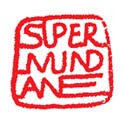Let's face it, perfection is boring. There's something much more interesting in a slightly imperfect face than one that is scientifically beautiful, of course it is a nice thing to look at, but for only a while, soon the very thing that makes it beautiful also makes it boring, there are no surprises, no uniqueness or character. So it is with print. I have noticed over the past few years that the work I've had coming back from the printers has looked more and more like the artwork that I produced. Now, this is really what I should be hoping for but there's something of an anti climax when you open a package of your new bit of print and it look exactly like what you were expecting. There is a lack of process involved in modern print, with artwork going straight from computer to plate. The result of this is things are so crisp and perfect that they look cold and flat. There's little in the way of texture (unless you are printing on textured paper) and everything is ultra sharp. (I've scanned in an example of new print, but even the process of scanning has softened the modern print a little, but the differences to the print on the Penguin cover are very apparant)
When I first started working as a designer artworks went through a range of processes way before it got to the plate stage. Typesetting would be produced photographically, which immediately gave it a softness, logos may have been duplicated many times, so they also had a warmth about them that comes from repeated copies being made on a bromide camera, everything had a physicality about it. Then, once the artwork had been produced, the films had to be made. If colours were jutting up against each other, the film of the lighter colour was made slightly out of focus to give it some spread or choke to compensate for the imperfect printing press. This trapping would add another element to the final print – which was never really part of the design – that would give a screenprinted feel. The translucent nature of the inks was very apparent, the printing process was not hidden. Now things look very similar to what you see on screen. Even the halftone dot has become so small (or replaced completely by dithering) it's beauty is invisible to us.
Of course, you can't make printing unpredictable again. The majority of people using print will find the consistency a wondrous thing, and for designers it means the nerves before getting that print job back are not quite as bad as when things were a little bit more unpredictable. The thing is I don't think the end result always looks as good as it once did when things were much more analogue. The warmth and beautiful softness of paste-up artwork has been replaced with coldness and sharpness that lacks a certain humanity about it. Typefaces that were designed with ink spread in mind are now reproduced exactly as they are when viewed on the computer, and it doesn't really suit them.
When I'm designing a logo or typeface, I often round off the corners slightly (see sample below), it's very subtle and most people will not notice, but the difference is the difference between old print and new, the difference between warm and cold and, given the choice, I'd go for warm every time.
Rob Lowe - 21st November 2010




No comments:
Post a Comment